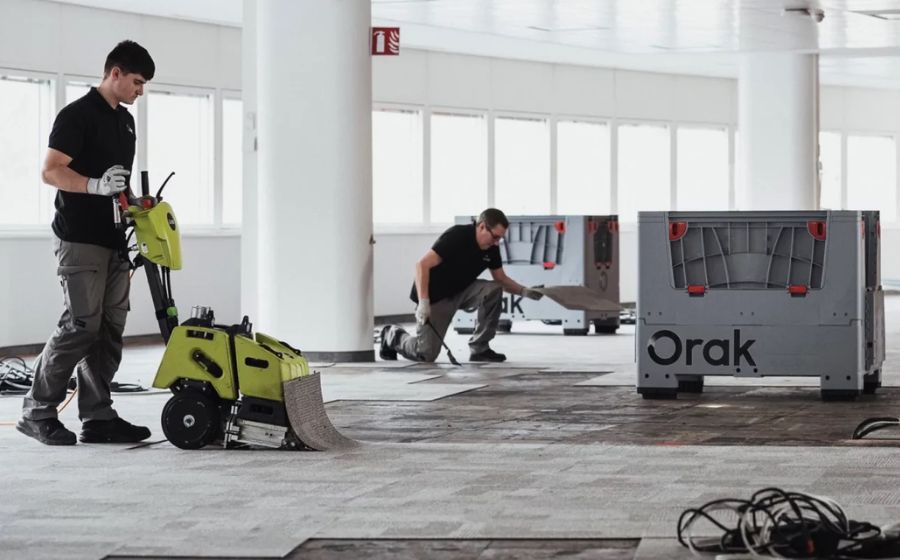The world’s largest sporting competition is here! This year, the Summer Games planning committee has a goal to halve its environmental impact compared to previous Games. In connection with this goal, the committee established a bold target for 1.5 million tons of CO2 – the lowest in the history of the event.
Reducing the Carbon Impact of the Athletes’ Village
Spanning the length of 70 soccer fields and including 40 buildings, the athletes’ village is a major consideration for carbon impact at the Games.
To reduce the carbon footprint of the event’s built spaces, the planning committee prioritized the incorporation of reused and recycled materials in the competition’s venues and infrastructure. A great example of this is the engagement of two local reuse carpet and flooring maintenance specialists – Textifloor and Orak – who contributed to the circular strategy for the Games by installing reused carpet tiles from Interface and other brands throughout the athletes’ village.
Of the 30,000 square meters Textifloor was responsible for within the athletes’ village, the company placed reused floors brands in 95% of the project, far surpassing the initial reuse target of 10-15%. Orak delivered a total of 24,611 square meters of carpet, including 14,759 square meters of reused flooring.

Interface products are ideal for reuse because certain styles can be randomly laid and all are solution-dyed, which preserves their appearance over time. Additionally, Textifloor installed floors using the company’s biomimetic TacTiles® glueless installation system, which allows the tiles to be connected without adhering to the subfloor. This glue-free installation method increases the reusability of carpet tiles at the end of their life cycle while also improving indoor air quality.
Supporting the Circular Economy
Following the Games’ conclusion, the committee has pledged to facilitate the reuse of furniture, facilities, and equipment from the event. In fact, the entire athlete’s village will be repurposed after the Games. Plans call for transforming the village into a new district featuring 2,800 homes with the capacity to house 6,000 people.
As part of this transition, Textifloor will return to the athlete’s village at the end of 2024 to give a third life to the flooring it installed. Once the floor coverings have been carefully removed, Textifloor will redirect them to the right channels for reuse, recycling, or donation.
Over the past two decades, Interface has led the way in creating a circular economy through its ReEntry® program. Through this program, the company fosters partnerships with suppliers and associations in France and internationally to close the loop by reusing its carpet tiles. In select markets, the company’s ReEntry program involves diverting flooring from landfills by taking back used Interface products for recycling as well as reuse.
Interface’s ReEntry program demonstrates that it’s possible to deliver flooring products that help promote a circular future without compromising on other essential attributes like beauty or performance. At Interface, we’ll continue to align with similar initiatives – while using the power of reuse to support the circular economy – as we work toward achieving our goal of becoming carbon negative, without offsets, by 2040.